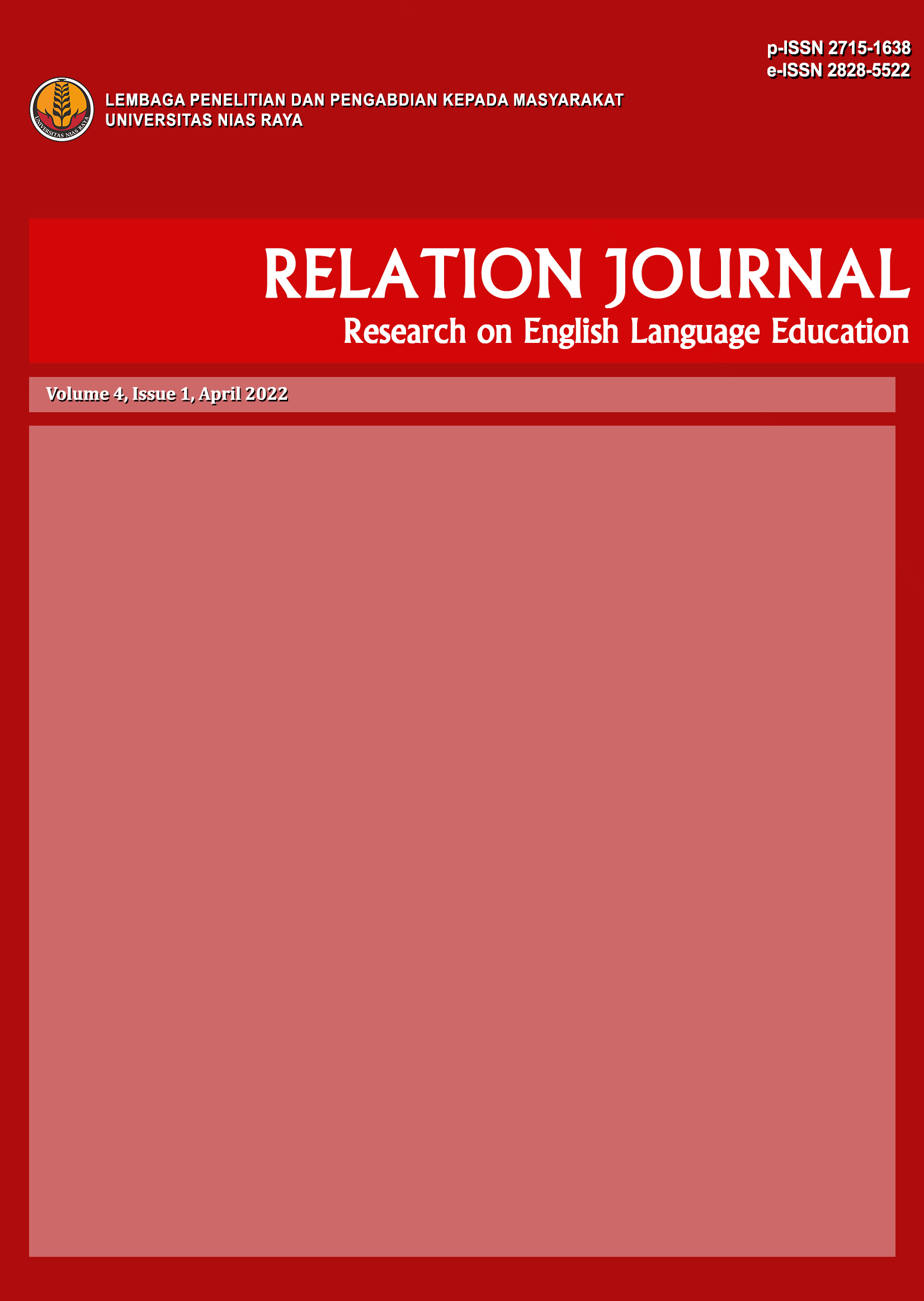GRAMMATICAL DEVIATION IN RICH BRIAN’S SONG LYRICS
Abstract
This research aimed to analyze the types of grammatical deviation in Rich Brian’s song lyrics. This research is designed in qualitative research with descriptive approach. The data of this research is the three lyrics of Rich Brian’s songs, are: Dat stick, Who that be, and Glow like that. The prosecures used during analyzing the data were data condensation, data displayed, verifying and drawing conclusion (Miles, Huberman & Saldana 2014 31-32). Based on the data analysis, it was found that there were six types of grammatical deviation, there are omission, double negation, overgeneralization, deviation of preposition, deviation of verb and deviation of pronoun and the deviation was mostly occured in the lyrics of the songs is omission. The researcher suggests English teachers, student, and readers to use this research as the reference to increase their knowledge about grammatical deviation. Also the readers to use this research as a guidance in conducting the relevant research to sharpen and enlarge their literal development by trying to understand deviation in song lyrics.
References
Branchette, Frances. 2015. English Negative Concord, Negative Polarity, and Double Negation. New York: Doctoral Dissertation.
Creswell, J.W. 2014. Research Design: Qualitative, Quantitative, and Mixed Methods Approaches (4thed). London: SAGE publication Ltd.
Crystal, David. 2008. A Dictionary of Linguistics and Phonetics. Boston: Blackwell Publishing.
Eastwood, John. 2002. Oxford Guide To English Grammar. Oxford University Process
Fromkin, Victoria., Robert Rodman, & Nina Hyams. 2011. An Introduction to Language (11thed). Boston: Cengage Learning, Inc.
Harmer J. 2007. The practice of English language teaching (3rded). London: Longman.
Krippendorf, K. 2004. Content Analysis: An introduction to its Methodology (6nd ed). California:SAGE publication, Inc.
Lincoln, Y.S &Guba E.G. 1985. The Constructivism Credo. California: SAGE publication, Inc.
Leech, Geoffrey N., & Mick Short. 1969. A linguistic Guide to English Poetry. New York: Longman Group Ltd.
Miles, M. B., Huberman, A.M. & Saldana J. 2014. Qualitative Data Analysis: A Methods Sourcebook (3rded). New York: SAGE Publication, Inc.
Ur, P. 2009. A Course in Language Teaching (Practice and Theory). New York: Cambridge University Press.
Radford, Andrew. 2012. Syntactic Theory And The Structure of English. New York: Cambridge University Press.
Trask, R. L. 1996. A Dictionary of Grammatical Terms in Linguistics. Boston: Wiley-Blackwell.
Walliman, Nicholas. 2011. Research Methods (the basics). New York: Routledge.
Source from Articles and Journals:
Aggreeni, D.I., Arifin, Arifin, M.H, and Setyowati R. 2018. African American Vernacular English Shrek Movie. JurnalIlmuBudaya (online). Vol.2. No.2.(https://media.neliti.com>mediaPDF27 September 2021)
Budiharto, R. Agus. 2018. Grammatical Deviation in President Jokowi’s Speech to the APEC CEO Summit. Studies in English Language and Education (online), Vol.5. No.1.(http://doi.org/10.24815/siele.v5il.7746 20 September2021).
Kondracki, N. L., Wellman, N. S, and Amundson, D. R. 2002. Content Analysis of Method and Their application in Nutrition Education. Journal of Nutrition Education and Behavior (online), Vol.34. No.4.(http://nutrition.flu.edu.edu 27 September 2021).
Matiini, Gharizi.2016. Overgeneralization in singular/plural Nouns and Suffixed Nouns of IELTS Course Students. JurnalPendidikan BahasadanSastra(online), Vol.16. No.2(http://dx.doi.org/10.17509/bs_jp78bsp.v16i2.4427 September 2021).
Mardijono, J.J. 2003.Indonesian EFL Advanced learner’s grammatical errors.Jurnal Sastra Inggris(online) /vol.5. No. 1.(http://puslit.potra.ac.id/journals/letters/ 27 September 2021).
Mansoor, M.S., & Salman, Y.M. 2017. Linguistics Deviation in Literary Style Science. Cihan University-Erbil Jounal of Humanities and Social Science (online). Vol. IV No 1 (https://jounals.cihanuniversity.edu.iq 27 September 2021)
You are free to:
- Share — copy and redistribute the material in any medium or format for any purpose, even commercially.
- Adapt — remix, transform, and build upon the material for any purpose, even commercially.
- The licensor cannot revoke these freedoms as long as you follow the license terms.
Under the following terms:
- Attribution - You must give appropriate credit , provide a link to the license, and indicate if changes were made . You may do so in any reasonable manner, but not in any way that suggests the licensor endorses you or your use.
- No additional restrictions - You may not apply legal terms or technological measures that legally restrict others from doing anything the license permits.
Notices:
- You do not have to comply with the license for elements of the material in the public domain or where your use is permitted by an applicable exception or limitation.
- No warranties are given. The license may not give you all of the permissions necessary for your intended use. For example, other rights such as publicity, privacy, or moral rights may limit how you use the material.









